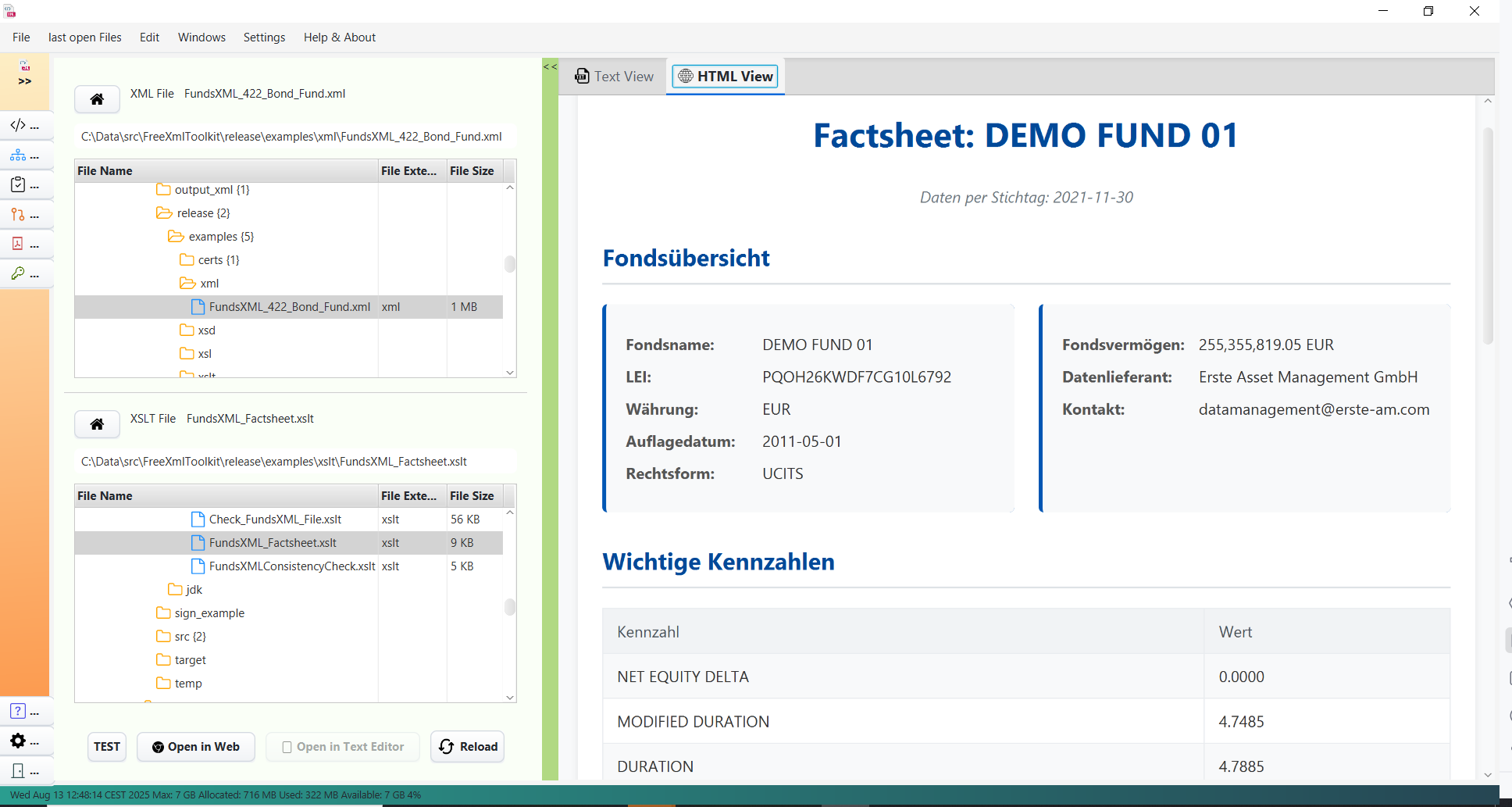FreeXmlToolkit
XSLT Transformation
Last Updated: November 2025 Version: 1.0.0
This tool lets you transform XML documents into other formats like HTML, text, or different XML structures using XSLT stylesheets.
What is XSLT?
XSLT (Extensible Stylesheet Language Transformations) is a language for transforming XML documents. Think of it like a recipe that tells the computer how to convert your XML data into a different format.
 XSLT transformation showing XML input and HTML output
XSLT transformation showing XML input and HTML output
How It Works
You need two files:
- XML File - Your source document with the data
- XSLT File - The stylesheet with transformation rules
The tool applies the rules from the XSLT file to your XML and generates the output.
 Screenshot placeholder: File selection panel with XML and XSLT inputs
Screenshot placeholder: File selection panel with XML and XSLT inputs
Using the XSLT Tool
Step 1: Select Your Files
- In the left panel, select your XML source file
- In the right panel, select your XSLT stylesheet
- The transformation runs automatically
Step 2: View the Results
 Screenshot placeholder: Transformation results panel
Screenshot placeholder: Transformation results panel
The output appears in the appropriate viewer:
- HTML output → Displayed as a rendered web page
- XML output → Displayed in a code editor with highlighting
- Text output → Displayed as plain text
Features
| Feature | Description |
|---|---|
| Automatic Transformation | Results update when you select files |
| Multiple Output Formats | HTML, XML, Text, and more |
| Live Preview | See results immediately |
| Open in Browser | View HTML output in your web browser |
| Error Messages | Clear feedback when something goes wrong |
Interface Options
Collapsible File Panel
Click the arrow to collapse the file selection panel and maximize your view of the results.
Open in Browser
For HTML output, click “Open in Browser” to view the result in your default web browser.
Tips
- Make sure your XML and XSLT files are valid before transformation
- Check the error messages if the transformation fails
- Use the preview to verify your output before saving
Navigation
| Previous | Home | Next |
|---|---|---|
| XSD Validation | Home | PDF Generator (FOP) |
| All Pages: XML Editor | XML Features | XSD Tools | XSD Validation | XSLT | FOP/PDF | Signatures | IntelliSense | Schematron | Favorites | Templates | Tech Stack | Licenses |